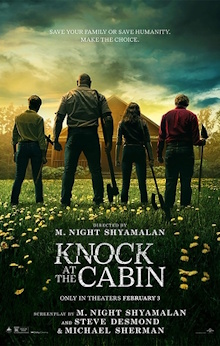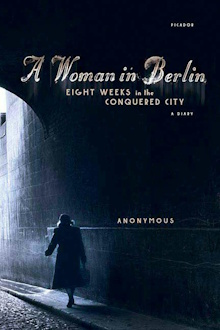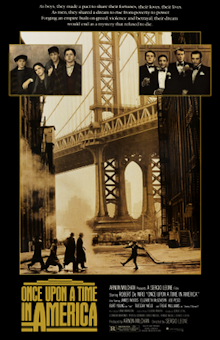We’ve previously seen the work of Mikhail Kalatozov in The Cranes are Flying. This is his follow-up to that celebrated film and once again it stars Tatiana Samoilova as the female lead. I expected to be another war era film but instead it’s a survival adventure that feels surprisingly modern. It pits the four explorers against the unrelenting power of nature and it’s the more terrifying because you know for a fact that it must be real. I don’t know how much of the forest they had to set on fire to film that scene. It does however have a jingoistic vibe that feels jarring to our sensibilities.
Continue reading Letter Never Sent (1960)All posts by Wan Kong Yew
Knock at the Cabin (2023)
It’s been a while since I’ve watched anything by M. Night Shyamalan even as he keeps churning films out. I’ve heard that this one is a cut above the rest and indeed the scenario it describes is exactly the type of moral dilemma I like to read about. Unfortunately this is mediocre on pretty much all counts and is disappointingly small in scope to boot. It’s the sort of thing I’d expect for an episode of the Twilight Zone maybe. The most interesting part of it for me may be that Shyamalan might have been playing off of his reputation as a director famous for his twists somewhat.
Continue reading Knock at the Cabin (2023)The Flavor of Green Tea over Rice (1952)
This isn’t one of Yasujirō Ozu’s better known works, nor does it star Setsuko Hara. It is however one of his funnier films and it does have a character named Setsuko though she is deceptively not the main character. Instead this is about a middle-aged married couple with a dysfunctional relationship and their failure to communicate with one another. The antics of the spoiled and willful wife are what makes this so funny. Unfortunately it does somewhat revert to an old-fashioned morality lesson and even lectures the audience about how a proper wife should behave at the end but it’s great while it lasts.
Continue reading The Flavor of Green Tea over Rice (1952)A Woman in Berlin
Seeing as the recent crop of genre fiction novels have not been terribly interesting to me, I’ve been venturing out to read a more diverse selection of books, especially non-fictional ones. This one is a memoir by a woman who was living in Berlin during the time it fell and was captured by the advancing Red Army in 1945. It’s a short book and covers a relatively short period of time from April to June 1945. But it’s packed full of detail as witnessed by a woman who is both exceptionally erudite and brutally honest in recording her experiences. The author was anonymous when the memoir was originally published but after her death, her identity has since been revealed to be Marta Hillers, a German journalist.
Continue reading A Woman in BerlinOnce Upon a Time in America (1984)
We needed multiple days to get through this epic and I shudder to think that Sergio Leone originally wanted something even longer. This would have been more bearable if it were actually good yet while it has the bones of a decent film, on the whole it’s so clunky. Robert De Niro is as great as ever and outacts everyone by a fair margin. But Leone is not American, has no ear for good American English dialogue and the film has no real psychological depth. It’s realistic in the sense that the characters are street hoods who never grew up but it also means that it’s really all just about sex and violence. It’s not a bad mobster flick but I certainly wouldn’t consider it among the greatest films of all time.
Continue reading Once Upon a Time in America (1984)Saturday Fiction (2019)
We’ve seen interesting work by Lou Ye before and here we have one with Gong Li as the lead. It’s a spy thriller that takes place when Shanghai was an international settlement nominally outside of Japanese control, a setting that I will note is popular for Chinese serials. Naturally Lou Ye adds his own artistic touch and plays around with what the protagonist is really up to. Unfortunately while it sets things up nicely and hints at a complex political situation with multiple factions in play, in the end it all amounts to nothing. All of the prior artistry feels almost superfluous when as it all but devolves into a conventional action movie.
Continue reading Saturday Fiction (2019)Rebel Ridge (2024)
I ordinarily wouldn’t pay any attention to these nondescript action show made especially for Netflix but this one has decent reviews and strong word-of-mouth recommendations. I’ve long thought that more grounded action movies would work well and ‘lo and behold here one is. This film intelligently uses corrupt police in a podunk rural town as the antagonists because there’s really no scarier villain in modern day America and even weaves in a vaguely plausible plot about civil forfeiture. Unfortunately the production is competent at best and mostly uninspiring. It’s not bad as an action movie but it’s not going to win any awards.
Continue reading Rebel Ridge (2024)





